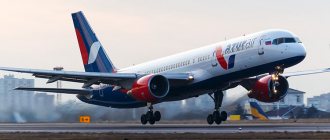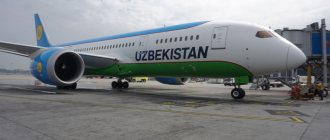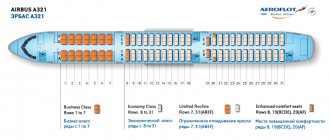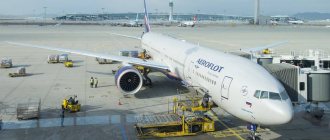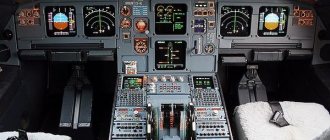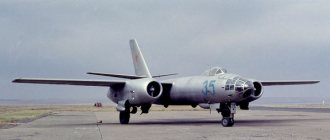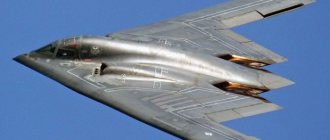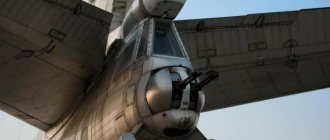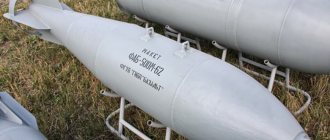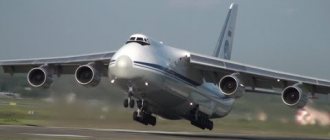History of creation
The very first model of the 737 family was the Boeing 737-100. After a short period of time, the 200th model appeared. The disadvantages of the first two models were too high fuel consumption, and due to the emerging oil crisis, the question of creating a new aircraft model arose.
The first two were replaced by 737-300 and 737-400. The second option was much more successful and was able to work for a long time. The Boeing 737-800 was created on the basis of the 400. In the new model, engineers were able to remove the shortcomings that were in the 400th. The result was an economical, spacious and technologically advanced aircraft, which attracted the attention of all airlines in the world. At the moment it is one of the most common liners.
Aircraft generations
The Boeing 737 has a very long history, and contemporaries divide it into 4 generations.
- The first generation “original” includes the Boeing 737-100 and 737-200.
- The second generation "classic" includes the Boeing 737-300 and 737-400).
- “Next generation” refers to modern Boeing 600, 700, 800 and 900.
- The last one is the generation of the future - “Max”. It is expected to include future airliner models that will replace the 800 and 900 versions.
The Boeing 737-900 differs from its younger brother in that it has a longer fuselage. After the presentation, this aircraft received so many pre-orders that it was able to overtake the entire branch of the 757 family in just one year.
First generation Boeing 737 100
Interesting! Each new Boeing 737 model, in addition to technical and design changes, had to be longer than the previous model.
Boeing 737 crew
The Boeing 737 is typically flown by a crew of two pilots:
- aircraft commander (PIC);
- second pilot;
- On board the aircraft there can be service personnel (flight attendants, flight attendants) from 4 to 8 people , depending on the aircraft model.
See also the article Boeing 777-300 aircraft and its technical characteristics
Description and characteristics of the liner
The Boeing 737-800 is a direct competitor to the Dutch Airbus A320. In terms of technical parameters, Boeing is slightly superior to the Airbus A320.
Dimensions
- The width of the aircraft is 3.5 meters, which allows passengers to travel in comfort.
- The Boeing 737-800 is one of the latest generation modern aircraft. Passenger capacity is 189 people.
- The length of the aircraft is 39.41, which increased the capacity of the aircraft.
- The maximum flight range is 5765 km.
- The wingspan is 34.31 m.
- Area - 125 m2.
- The speed of the airliner is 852 km/h.
Weight
- Maximum take-off weight can vary from 78,240 to 79,000 kg.
- Landing weight is 63,320 kg.
- The empty plane weighs 41,140 kg.
- Weight without fuel is 61,690 kg.
- The maximum weight of permitted baggage is 20,540 kg.
- The capacity of the fuel tanks is 26,020 liters.
Development and design[ | ]
History of creation |
The creation of the Airbus A320 family, which incorporated the latest technologies in the field of avionics and composite materials, prompted Boeing in 1991 to develop an updated aircraft. , the Boeing 737 Next Generation program was announced on November 17, 1993.
. The 737NG family includes the −600, −700, −800, and −900 variants. To date, this is the most serious update of the 737 model. The flight performance of the 737NG has been significantly improved, however, at the request of customers, continuity with previous generations of Boeing 737 has been maintained. The redesigned wing has a 25% larger area, the span has been increased by 4.88 m, which has made it possible to increase fuel reserve by 30%. Less noisy and more economical CFM International CFM56-7B engines are installed. These improvements made it possible to increase the range of the model by almost 1,700 km, which allows the aircraft to operate transcontinental flights. The flight test program was carried out using ten aircraft: three modifications -600, four -700 and 3 -800.
Salon |
Boeing 737-800 cabin with normal interior
The cabin of the Boeing 737 Next Generation has been improved in accordance with the solutions used on the Boeing 757-200 and Boeing 737 Classic; Some elements were borrowed from the Boeing 777, in particular the larger, more rounded overhead bins and the flowing lines of the ceiling panels. The solutions used in the Boeing 737 Next Generation became standard on the Boeing 757-300, and then began to be installed on order on the Boeing 757-200.
In 2010, the interior of the Boeing 737 Next Generation was redesigned to be unified with the Boeing 787. The cabin was named Boeing Sky Interior
new rotating luggage racks were used (for the first time on a narrow-body Boeing aircraft), new wall panels, new service units and LED cabin lighting. Sky Interior cannot be installed on existing aircraft, but component manufacturer Heath Tecna offers upgrade packages for the 737 and 757 models that are similar in appearance to Sky Interior (mainly due to new overhead bins).
Production and testing |
The first modification of the Boeing 737NG series was the −700. The aircraft was first shown on December 8, 1996. This aircraft became the 2843rd Boeing 737 and made its first flight on February 9, 1997.
The first 737−800 was shown on June 30, 1997 and made its first flight on July 31, 1997.
The smallest version in the new series, the −600, identical in size to the −500 modification, was built in December 1997 and made its first flight on January 22, 1998. It received FAA certification on August 18, 1998.
Improvements |
737—800 Ryanair
Boeing 737-700 SCAT Airlines
In 2004, Boeing offered customers the Short Field Performance package, developed for the airline Gol Transportes Aéreos, which often serves airports with limited runway length. The package improved the aircraft's takeoff and landing performance. The package is installed upon request on any modification of the 737NG and is standard equipment on the Boeing 737-900ER.
In July 2008, Boeing began offering ceramic brake discs developed by Messier-Bugatti, which can reduce brake weight by 250-320 kg, depending on whether the aircraft is equipped with conventional or high-performance steel discs. Reducing brake system weight by 320 kg on a Boeing 737-800 results in a 0.5% reduction in fuel consumption. The first customer of the new system was Delta Air Lines, which at the end of July 2008 received the first Boeing 737-700 with the new braking system.
Boeing planned to increase production of the 737 from 31-35 units per month in January 2012 to 38 units per month in 2013. Peak production - 42 cars per month - was planned for 2014.
The future of modeling |
Main articles: Boeing Yellowstone Project
,
Boeing 737 MAX
Since 2006, Boeing has been considering replacing the 737 with an all-new design (internally known as "Boeing Y1"). In 2010, Airbus launched the Airbus A320neo program, a narrow-body aircraft with new engines providing better fuel and operating efficiency. Under pressure from these circumstances, on August 30, 2011, the Boeing Board of Directors approved the Boeing 737 MAX project.
Boeing says the 737 MAX will burn 16% less fuel than the current Airbus A320 and 4% less than the Airbus A320neo.
Design
Fuselage, wing and cabin structure, engines
The Boeing 737 800 has an almost identical design to other aircraft. It retained some features from its predecessor 737-100 and 737-200.
- The modern model was made 3 meters longer, which increased passenger capacity.
- The main competitor is the Airbus A320. The Boeing 737-800 was created in order to seize the initiative in the market. Structurally, the airliner is a low-wing aircraft with a swept wing. On the plane, first of all, the wing design and engine control system were changed.
- “Winglets” or endings are one of the most important innovations. It saves fuel and also demonstrates better performance during takeoff, landing and braking.
- The cockpit has undergone major changes, where analog instruments have been replaced with digital ones.
- New technological solutions have made it possible to reduce the weight of the aircraft by almost 1/3. Flight range, speed and safety were also increased.
- The aircraft is equipped with two CFM-56-7B engines, one on each side. The engines are manufactured by CFM International. If the aircraft is fully loaded, the distance from the engine to the ground will be only 46 cm. Due to such a low ground clearance, the aircraft has increased requirements for runways and airports in general.
The design of the aircraft has undergone major changes due to the low location of the power plants. Those units that were previously installed under the wing had to be moved to the side of the engines. Such changes affected the fuselage design, which eventually became somewhat flattened.
Fuel system
Fuel tanks have a classic location in the wings. In the Next generation, one additional tank partially occupies the fuselage, extends into the base of the wings up to the pylons to which the engines are attached.
Important! The fuel system is designed in such a way that fuel is used first from the central tank and then from the wings.
Boeing 737s have one feature - they do not have the ability to dump fuel. Therefore, during an emergency landing, you have to take the risk of landing with fuel in the tanks or generating it in the air.
Among Boeings there is a BBJ modification, which allows you to accommodate additional tanks (up to 9 pieces) stored in the luggage compartment. This allows you to further increase the fuel volume to 37 tons.
Chassis
Overall, the 737-800 chassis has a classic design, but several technical features set the car apart from others.
The chassis consists of three struts: the first steering strut is located in the bow and two main struts on both sides of the center section. Each rack has two wheels. The difference is that this aircraft belongs to the “Next Generation” and such engine units have a larger diameter, which affects the reduction in ground clearance. To increase ground clearance, the designers needed to lengthen and strengthen the racks.
Important! The main distinguishing feature of Boeing 737-800 aircraft is the non-closing landing gear struts.
Despite the fact that this technological solution increases air resistance, it has its advantages. Firstly, the engineers did a lot to keep the drag low. Secondly, installation of additional equipment is not required. Thirdly, thanks to the absence of hydraulics, consoles and the equipment itself, the weight of the aircraft was reduced.
In 2008, there were new changes to the braking system. Instead of conventional ones, they began to install carbon brakes, which are lighter and work more efficiently.
Boeing 737-800
| Passenger capacity | 189 seats, 160 of which are in economy class |
| Cabin width | 3.6 m |
| Flight distance of a loaded aircraft | 5400 km |
| Maximum speed | 850 km/h |
| Empty weight | 41.14 t |
| Maximum take-off weight | From 78.24 to 79 t |
| Length | 39.5 m |
| Height | 12.5 m |
| Wing length | 34.3 m |
Aerodynamic design
The aerodynamic design looks like this:
- twin-engine low-wing aircraft with a swept wing;
- single fin;
- the engines are turbofan and are installed under the wings;
- The clearance between the engine and the runway when fully loaded is 46 cm.
Equipment, systems and engines
Air conditioning/pneumatic system
Air intake comes from engines and a special power system. Air is needed for interior air conditioning, anti-icing system, engine starting and equipment cooling.
Boeing 737-300, -500, -600 and -700 have a similar air conditioning system with the "Original" generation. Liners 737-400, -800 and -900 have a completely different system. For the “long” versions of the aircraft, the temperature zone is divided into two zones. Temperature control is also more advanced than in older versions.
Aircraft belonging to the “Classic” or “Next Generation” generation have a “hammered” shape of the air intakes. In older versions, the air intakes were round in shape.
Power supply system
The Boeing 737-800 has an alternating current system with a voltage of 115 V and a frequency of 400 Hz. Older versions were equipped with two synchronous generators with a power of 40 KVA. Airplanes are equipped with a secondary DC system, the voltage of which is 28 V. To obtain it, there are three rectifier devices and a battery.
Some versions of the “Classic” family are equipped with variable speed or constant frequency generators.
The New Generation's electrical system is significantly different from the 737 Classic's. The power distribution system has been changed. To start the APU, the designers decided to add an additional battery. Generators also received an update. Instead of the old ones, new models were installed, combined with a constant speed drive. The power of each is 90 KVA. The dial indicators for energy management have been replaced with digital ones.
Flight control system
Boeing 737s have a primary control system with wire ropes and redundant boost control and transition to boost control. You can control the airliner using the elevator or rudder and ailerons. The steering operates using a main or backup drive. The second is considered an emergency. There is no manual control.
The secondary system consists of slats of two designs:
- the first - “Slat” includes three sections external to the pylon;
- the second is the “Leading Edge Flap”, which has two internal sections.
All five slats are of the three-slot type, two-section. Used in conjunction with ailerons. Slats are divided into the following types:
- flight spoilers;
- always working;
- ground.
The aircraft design includes an adjustable stabilizer. The Boeing 737-800 has new double-slot flaps. Due to the fact that the aircraft's wings were lengthened by 5.5 m, the designers added one section of slats on both sides.
Fuel system
In total, the aircraft has three integrated fuel tanks. Two in the wings and one in the body. First of all, fuel is pumped out from the first tank, and then from the rest. Each tank is equipped with two fuel pumps. The total tank capacity of the “Original” generation varies from 12,700 to 15,600 kg, depending on the modification.
The “Classic” family received larger tanks. The total capacity is 16,200 kg. In addition, the developers have added the ability to install an additional tank in the luggage compartment.
“New Generation” is distinguished by the fact that integrated tanks have the largest capacity - 20,800 kg. The changes also affected the central tank. Now it occupies not only part of the fuselage, but also part of the wing up to the pylon. The pumps in the tank have a different location. Among the innovations, a system for removing water from tanks was added.
The BBJ modification allows you to install an additional 9 tanks in the luggage compartment. The total maximum weight of the fuel capacity reaches 37,712 kg.
Among the shortcomings is the lack of a fuel dump system. In an emergency, the pilot has to fly in circles to burn off fuel. If an emergency landing is necessary, you will have to take the risk of landing the aircraft in excess of the maximum landing weight.
Hydraulic system
The Boeing 737 is equipped with three hydraulic systems:
- "A" is considered the main system, powered by two motor pumps;
- “B” also refers to the main system, but is powered by two electric pumps;
- “Standby” - the backup system is activated in an emergency, powering only the slats, rudder and reverse.
Most of the hydraulic system is located in the chassis well. The "Classic" and "New Generation" families are very different from the "Original". In "Original" the system is completely redistributed. For each main system, there is one electric hydraulic pump and one motor pump. In a normal situation, electric pumps do not work.
Avionics
Since the “Original” generation is considered outdated, its equipment is therefore also outdated. Boeing 737-100, -200 were equipped with an analog avionics complex. The systems were duplicated. Indication - electromechanical.
“Classic” - more modern aircraft began to be equipped with a digital complex that complied with ARINC standards. The Flight Management System complex consists of five main systems.
Inertial navigation system - includes two inertial units and switching equipment. The digital air signaling system includes two computers. Sometimes included in documentation with the IRS. The electronic display system includes two character generators and two CRT indicators. The first is responsible for the entire aerobatic complex, and the second for the horizontal situation. The other two are responsible for display control and switching equipment. The automatic control system is divided into two systems: the first is an automatic control system, and the second is a director system. The latter has two channels “Channel A” and “Channel B”. The director system includes two control computers, a mode control panel and two pairs of autopilot hydraulic drives (one is located in the lateral channel, and the second in the longitudinal). The autopilot hydraulic drive is responsible for influencing the input rods of the aileron boosters and elevators. He is also responsible for the sensors. The automatic traction control is needed to act on the engine control wiring cables. It comes with a computer and drives. The computer flight control system includes a computer and two multifunctional control panels. It is the most basic FMS (Flight Management System) system, since it completely integrates the entire complex. The main purpose is calculations, control and testing of other systems. The “Classic” generation has dial and digital indicators. The instruments are located in front of the pilots. In the first versions of the Boeing 737-300, electromechanical indicators were installed. Two combined instruments “Primary” and “Secondary” are responsible for indicating engine operation. In this case, the pointer instruments are replaced with LED modules. There is a simplified version with conventional dial engine indicators.
The “Next Generation” avionics are not much different from the “Classic” generation. The only difference is that the aircraft additionally has a new display complex from Honeywell. The same system was implemented on the Boeing 777. The system has two special computers and six liquid crystal displays. If necessary, all necessary information can be duplicated on one of the displays. The system also includes switching equipment and a control panel. In addition to displaying data, the system serves as an interface. Some aircraft modifications have an extended version of the CDS, which includes a head-up display. Thanks to design solutions, it was possible to combine the inertial navigation system and the air signal system.
Orders
By May 2014, the new aircraft had received more than 2,200 orders from 47 different buyers, 100 of which were issued by American Airlines, 201 by Indonesian Lion Air, 35 by American Aviation Capital Group and Southwest Airlines with an order for 200 aircraft. Norwegian Air Shuttle became the first European customer for the new 737, with an order of 100 units.
The Boeing 737 MAX is the best-selling aircraft in the company's history: the number of orders for such aircraft has already exceeded 2,000 units worldwide (early 2019). According to the manufacturer, buyers of the new generation Boeing 737 aircraft include the world's largest airlines, including Russian ones.
| order date | Customer | B737 MAX 7 | B737 MAX 8 | B737 MAX 9 | B737 MAX 10 | Total | Source |
| December 13, 2011 | Southwest Airlines | 30 | 170 | 200 | |||
| January 24, 2012 | Norwegian Air Shuttle | 100 | 100 | ||||
| February 22, 2012 | Lion Air | 1 | 200 | 201 | |||
| July 6, 2012 | Virgin Australia | 23 | 23 | ||||
| July 3, 2012 | Air Lease (ALC) | 89 | 15 | 104 | |||
| July 12, 2012 | United Airlines | 100 | 100 | ||||
| September 20, 2012 | Avolon | 10 | 10 | 20 | |||
| October 1, 2012 | Gol Transportes Aéreos | 60 | 60 | ||||
| October 3, 2012 | GECAS | 95 | 95 | ||||
| October 11, 2012 | Alaska Airlines | 20 | 17 | 37 | |||
| November 4, 2012 | ALAFCO | 20 | 20 | ||||
| November 5, 2012 | Aeromexico | 60 | 60 | ||||
| November 14, 2012 | SilkAir | 31 | 31 | ||||
| January 2, 2013 | Aviation Capital Group | 50 | 10 | 60 | |||
| February 13, 2013 | American Airlines | 100 | 100 | ||||
| May 14, 2013 | Icelandair | 9 | 7 | 16 | |||
| May 15, 2013 | Turkish Airlines | 55 | 10 | 65 | |||
| June 19, 2013 | CIT Group | 30 | 30 | ||||
| July 10, 2013 | TUI Travel | 40 | 20 | 60 | |||
| August 7, 2013 | Travel Service Airlines | 3 | 3 | ||||
| September 26, 2013 | WestJet | 25 | 40 | 65 | |||
| January 6, 2014 | Flydubai | 75 | 75 | ||||
| February 19, 2014 | SunExpress | 15 | 15 | ||||
| March 12, 2014 | SpiceJet | 42 | 42 | ||||
| March 19, 2014 | Comair | 8 | 8 | ||||
| April 1, 2014 | Air Canada | 33 | 28 | 61 | |||
| April 2, 2014 | Private customer | 1 | 1 | ||||
| May 21, 2014 | Nok Air | 8 | 8 | ||||
| July 14, 2014 | Okay Airways | 6 | 6 | ||||
| August 25, 2014 | BOC Aviation | 50 | 50 | ||||
| September 20, 2014 | Ethiopian Airlines | 20 | 20 | ||||
| October 12, 2014 | Garuda Indonesia | 1 | 1 | ||||
| October 31, 2014 | Monarch Airlines | 30 | 30 | ||||
| November 10, 2014 | SMBC Aviation Capital | 80 | 80 | ||||
| December 1, 2014 | Ryanair | 100 | 100 | ||||
| December 15, 2014 | Jetliners | 5 | 5 | ||||
| S7 Airlines | 9 | 9 | |||||
| January 17, 2018 | SCAT Airlines | 6 | 2 | 8 | |||
| March 20, 2018 | SkyUp Airlines | 2 | 3 | 5 | |||
| May 10, 2018 | NordStar | 30 | 30 | ||||
| May 25, 2018 | Ural Airlines | 14 | 14 | ||||
| July 17, 2018 | Belavia | 4 | 4 | ||||
| September 14, 2018 | Ukraine International Airlines | 3 | 3 | ||||
| NordStar | |||||||
| Air China | 8 | 8 |
Interior layout
The Boeing 737-800 has earned high reputation among various airlines. It is especially successful with low-cost airlines, which are preparing entire fleets of such aircraft.
Passenger cabin and operating companies
The airliner is designed for medium or short flights. Most often used on a single continent. Among the aircraft's competitors, only the Airbus A320 is noted. The aircraft is in greatest demand in the USA, where it was designed. The most 737-800s were purchased by the following companies:
- Southwest Airlines (696 aircraft);
- American Airlines (328 aircraft);
- United Airlines (325 aircraft);
- Delta Air Lines (83 aircraft).
On the European continent, the Boeing 737-800 is also very popular, despite the fact that it is operated together with the Airbus A320. Irish Airlines has the most aircraft - 413 units.
It is also widely used among Russian airlines, Pobeda, S7 Airlines, Rossiya and Utair. Some airlines, for example, S7 Airlines, order aircraft for a special project.
This aircraft is a narrow-body model. There is only one passage in the cabin in the center. Economy class seats are located three on each side. Business class has 2 seats. If the aircraft is refurbished by replacing business class seats with economy class seats, the maximum passenger capacity will reach 189 people.
One of the seating options is 12 seats for business class and 150 for economy class. The plane has 8 exits. Two at the front of the aircraft, four in the middle of the fuselage and two at the tail.
Layout of seats in the aircraft cabin
The initial idea was to create a fully economical aircraft only for economy class passengers (by the way, this option is used by the domestic low-cost carrier Pobeda). However, major airlines are betting on business class and booking a mixed option. In Russian airlines, the layout of aircraft may differ slightly from each other.
For example, airlines order aircraft with 12 seats for business passengers. The seats are located on both sides of the board, two at a time. In economy class there are seats for three. Only in the middle of the fuselage, near the emergency exit, there is a row of seats arranged in pairs. The plane has 2 toilets and catering sections, which are located in the bow and tail.
Description of seats by block of rows
A poorly chosen seat can ruin the entire flight experience. Therefore, the choice of location plays a big role.
Despite its many perks, business class has its good and bad points. Each has its own pros and cons, so you have to choose according to your taste. An example is taken of an airplane with three rows of seats.
- The first row is good because there is a lot of legroom; there are no seats in front that can recline the backrest. But the only thing that will be in front of the passenger is a partition separating the salon from the kitchen with a dressing room.
- In the second row, the only downside is that the seatbacks can be opened.
- The third row has the same drawback as the second, but added to it is the fact that the partition separating the economy class from the business class is too thin and the noise coming there can be clearly heard.
In economy class, most seats are standard, but there are a few things you need to pay attention to.
Advice! Passengers who are claustrophobic or have a fear of flying should choose seats close to emergency exits and avoid rows without windows.
- The first row is good because there are no reclining front seats. For traveling with a child, this row will be the best option, since it has mounts for baby bassinets. The third positive is that service starts at the front of the plane, making this a priority meal choice. The disadvantages are the partition, which is located close to the seats, and the screen separating business class from economy class, which you will have to see the whole way.
- Those who like to look out of the windows are not recommended to sit in the 9th row of seats, since they are simply not there.
- The 12th row is bad because the backrests have too little or no angle of inclination. The designers had to take this step, since the location of the seats coincides with the central exits.
- The 13th row can safely be called “for everyone.” Among the shortcomings are the inconvenient location of the seats and the inability to recline the backrest. People with disabilities, couples with children, and transporting animals should not travel in this row, as in an emergency this may make it difficult for passengers to move through the central emergency exit. In addition, in the event of an accident, the assistance of a passenger sitting next to you will be required to open the door. The advantage is the ability to straighten your legs, as there is additional space.
- Row 14 is a very good option. There's plenty of legroom up front. However, the side seats are slightly sloping and there is no armrest on the emergency exit side.
- The 27th row is considered one of the most unfortunate, as it is located next to the toilet. Frequent walking and the queue created can be a big hindrance.
- However, the worst is row 28. In addition to all the above-mentioned disadvantages, it is also added to the inability to recline the back of the seat, since it is located close to a thin partition, so passengers often heard the slamming of the door and the noise of the flush tank.
Advice! People with weak vestibular apparatus are recommended to choose seats in the bow of the aircraft, as there is less turbulence there.
Designation of seats in the cabin
Each seat on the plane has its own number and letter. The number numbers the row, and the letter indicates the specific seat. The seats next to the porthole are designated by the letters “A” and “F”. These seats are considered an ideal option for those traveling alone, who like to sleep during the flight or read. In any case, being in this seat you will not have to let other passengers go to the toilet, as, for example, in seat “B”,” E”,” C”,” D“.
Middle seats “B” and “E” are good for those who are afraid of flying on an airplane.
“C” and “D” seats are good because you can quickly, without disturbing anyone, get to the toilet or just walk around the cabin.
Single class model overview
The aircraft exclusively for economy class has a slightly different layout. Below we will look at good and bad seats on the plane for economy class passengers only.
- Row 2, seats F, E, D are located immediately behind the partition. This option is not recommended for passengers suffering from claustrophobia or fear of flying, as the passenger may feel a sense of enclosed space.
- In row 14, passengers reported the temperature to be slightly lower than in other parts of the plane.
- There are emergency hatches near rows 15, 16 and 16 and for this reason there is no reclining backrest.
- The 17th row of seats B, C, D, E can be called successful, as there is additional legroom. The place cannot be occupied by elderly people, people with disabilities, or parents with small children. This is necessary so that the passenger can open the emergency hatch in an emergency. This row is also good because it is located relatively close to the toilet and cockpit.
- The worst row of seats is the 33rd, as it does not have the ability to recline the backrest, is close to the toilet, there is constant walking of passengers, slamming the door and sounds of the flush tank.
Review of the business class cabin model
The airline operates a Boeing 737-800 with five rows of business class seats.
As usual, the first row of business class seats is very unfortunate, as it is located close to the bulkhead and there is little legroom. The rest of the seats are comfortable and do not have any important drawbacks.
In economy class, the 6th row of seats, like the first, rests against a partition, but for those who like to look out the window or read a book, this is not a problem. In the 12th and 13th rows you cannot recline the seats, as they are close to the emergency exit. The 13th row is quite comfortable. Row 14 is considered the most spacious, as it is located at the emergency exit of the aircraft.
Classically, the 28th row of seats is located near the toilet and this is its main drawback, since the passenger will constantly hear the running toilet tank, the constant walking of people and the slamming of the door. Also, this row will be the last to be served.
Review of the business class cabin model
Seats near emergency exits
The Boeing 737-800 has 4 emergency exits in the middle of the plane. They are located between rows 15 and 16 (the location also depends on the aircraft layout). These seats are considered comfortable as there is plenty of legroom.
As stated above, the following cannot be planted in these places:
- passengers with children;
- people with disabilities;
- pregnant women, passengers with animals;
- foreigners who do not speak Russian or English.
These requirements are necessary so that the passenger sitting next to the exit can clearly follow the instructions of the pilot and flight attendants to open the emergency door.
Seats near emergency exits
General principles for boarding passengers
When purchasing a ticket, first-time passengers do not know which seat to choose, and choosing the wrong seat can greatly ruin the flight experience.
- Passengers who are afraid of flying are advised to choose seats D, E, B, C. C and D are located on the edge and allow the passenger to speak directly to the steward or to walk around the plane to calm down. The porthole is also less visible. But at this point it will be necessary to release passengers who decide to leave their seats. Seat B and E are located in the middle and people on both sides give a feeling of protection.
- Middle seats are not recommended for passengers flying alone, as being surrounded by strangers can be stressful, especially if both armrests are occupied by neighbors.
- Seats near the porthole allow you to admire the beautiful landscape, but it will be difficult to leave your seat, since you will have to disturb two neighbors.
Which airlines operate
The Boeing 737 MAX 8 is one of the best-selling airliner models.
The Boeing 737 MAX is actively operated by the following companies:
- Southwest Airlines (USA) - 170.
- American Airlines (USA) - 100.
- Alaska Airlines (USA) - 20.
- Air Canada (Canada) - 33.
- WestJet (Canada) - 40.
- Aeromexico (Mexico) - 60.
- Gol Transportes Aéreos (Brazil) - 60.
- Virgin Australia (Australia) - 23.
- Monarch Airlines (UK) - 50.
- Ryanair (Ireland) - 100.
- Norwegian Air International (Norway) - 100.
- Icelandair (Iceland) - 9.
- TUI Travel (Germany) - 40.
- Travel Service Airlines (Czech Republic) - 3.
- Turkish Airlines (Türkiye) - 55.
- SunExpress (Türkiye) - 15.
- SkyUp Airlines (Ukraine) - 2.
- Ukraine International Airlines (Ukraine) - 3.
- Belavia (Belarus) - 4.
- S7 Airlines (Russia) - 9.
- Utair (Russia) - 30.
- Ural Airlines (Russia) - 14.
- SCAT airlines (Kazakhstan) - 6.
- Flydubai (UAE) - 75.
- SpiceJet (India) - 42.
- Lion Air (Indonesia) - 1.
- Garuda Indonesia (Indonesia) - 50.
- SilkAir (Singapore) - 31.
- Nok Air (Thailand) - 8.
- Air China (China) - 8.
- Okay Airways (China) - 6.
- Ethiopian Airlines (Ethiopia) - 20.
- Comair (South Africa) - 8.
Facilities
The Boeing 737-800 is equipped with sockets for charging gadgets. The Internet is not yet available, but the airline is considering the possibility of introducing a Wi-Fi network. Some aircraft are equipped with seat-back monitors. There is a wide video and music library. You can also connect to the airline mobile application.
In airliners, a music listening system is built into the armrests. Avia and Pobeda did not include any additional entertainment.
Boeing 737 amenities
Model range Boeing 737-800
In addition to the civilian version, this aircraft also has a military version. There is a militarized version of the 737-800ERX and the P-8 Poseidon. Some models are used for non-scheduled flights.
There is a version BBJ2, which has expensive finishes, sofas and a generally high level of comfort.
Place of production
Initially, most of the work was performed at the company's main plant, which was located near Seattle. The body and wing were installed on it. The tail section was already assembled at the plant in Wichita. The chassis, technical units and other parts could be assembled at other factories by partner companies. The assembled aircraft parts flowed to the main plant in Seattle, where complete assembly continued.
After some time, the assembly shop was moved to Wichita, where parts were delivered by rail.
Interesting! The delivery scheme for assembled components and mechanisms was tested in 1970 and is still in use today.
At the moment, the final assembly of the aircraft is taking place in the city of Renton.
Prospects
At the moment, all Boeing's efforts are focused on the production of the newest Boeing 737 Max aircraft. This is a new generation airliner with updated avionics and security systems. The new aircraft has not lost the qualities of the old one and at the same time has become more technologically advanced.
The new aircraft will gradually replace Boeing's 737-800 and 737-900.
Accidents and disasters
During the operation of the Boeing 737 MAX since May 2020, 4 airliners have been lost.
| date | Board number | Scene of the incident | Victims/On Board | Short description |
| 29.10.2018 | PK-LQP | Jakarta | 189/189 | Fell into the sea shortly after takeoff due to erroneous actions of the crew as a result of unreliable readings from the MCAS system. The investigation is ongoing. |
| 14.12.2018 | LN-BKE | Shiraz | 0/180 | Forced landing due to failure of one of the engines. The plane could not take off from Iran for two months due to US sanctions. |
| 10.03.2019 | ET-AVJ | Addis Ababa | 157/157 | Crashed shortly after takeoff. The investigation is ongoing. |
| 26.03.2019 | SWA-8701 | Orlando | 0/2 | Ferry flight. Forced landing due to engine problems. |
Expert advice on choosing locations
Passengers who are flying on an airplane for the first time need to become thoroughly familiar with the layout of the aircraft and the features of the seats in order to avoid any unpleasant feelings.
- First of all, you need to familiarize yourself with the layout and parameters of the aircraft.
- Airline staff can advise passengers on the correct choice of seat.
- If a passenger is sensitive to turbulence, then it is better to consider those seats that are located closer to the nose of the aircraft. At the beginning of the aircraft it is less noticeable.
- On a long flight, it is not recommended to choose seats near toilets or emergency exits. With the first option, everything is clear, but in the second, the seat backs cannot be lowered due to safety reasons.
- It is also undesirable to choose places located close to utility rooms. Excessive noise will prevent you from fully enjoying the flight.
- If you are traveling with a pet, you must position yourself closer to the aisle.
Boeing 737 800 single class aircraft layout
Best places
On air, the best seats can be purchased for an additional fee. The places are called "Space+". A distinctive feature of these seats is the extra legroom. The best seats on an airplane are designated as 1 A, B, C and 2 D, E, F. Both options also have a cradle mount.
Aircraft with the VQ-BUF and VQ-BUE modifications have a different seat arrangement. The best seats are 1 D, E, F and 2 A, B, C. The best seats also include 16 A, B, C, D, E, F. These seats provide more legroom.
Nice places
15 A, B, C, D, E, F also have extra legroom, but they have one drawback - you cannot recline the seat back.
Bad places
31 C and B - places are located near the toilet. Frequently passing passengers and queues can greatly spoil the impression. 32 A, B, C, D, E, F - the option is even worse, since it is located even closer to the toilet. In addition to the above disadvantages, it is also impossible to lower the back of the chair. The last two rows are always a bad option.
You can select a seat in advance by purchasing a ticket or registering.
Aircraft reputation
During its operation, passengers fell in love with the liner due to its “heavenly” soothing interior, large capacity and comfort. The aircraft's excellent performance and ergonomics have made the model one of the most popular among airlines.
Reliability assessment
The manufacturer evaluates the model according to high reliability indicators - up to 99.8%. However, due to the decision of the US authorities to ban the operation of the entire Boeing 737 MAX family, the manufacturer also decided to suspend production.
Maneuvering Characteristics Augmentation System (MCAS) - helps pilots determine the aircraft's position in the air. It was in this system that failures were discovered. The introduction of the MCAS system was necessary because the aircraft's engines were enlarged, causing it to raise its nose upward. MCAS regulates the aircraft's deflection in the air and points the nose down. However, like any automated system, it can fail, which affects the reputation of the airliner.
Accidents and disasters
The Boeing 737 MAX 8 is notorious for two major crashes due to similar circumstances:
- October 29, 2020 - An Indonesian Lion Air flight crashed after 13 minutes from Jakarta. 189 people died.
- March 10, 2020 - the plane crashed six minutes after taking off from the capital of Ethiopia, Addis Ababa. All 157 people died.
Last news
On March 10, 2020, a serious plane crash involving a Boeing 737 MAX 8 occurred in Ethiopia. After this, Chinese airlines decided to suspend operation of this model. The Civil Aviation Administration of China noticed similarities between the Lion Air crashes in Ethiopia and Indonesia in October 2020.
On March 12, 2020, Germany, France, Austria and the UK abandoned the use of the Boeing 737 MAX 8. Following them, the rest of the European Union countries closed the airspace for this model.
Until the precise cause of the plane crash in Ethiopia is clarified, Vietnam, Indonesia, Mongolia, Oman, the Russian Federation, Kazakhstan and Singapore refused to carry the Boeing 737 MAX 8.
On March 13, 2020, Donald Trump announced a ban on the operation of all modifications of the Boeing 737 MAX. The total number of countries that have abandoned the use of the Boeing 737 MAX 8 exceeds 40.
The US Federal Aviation Administration studied satellite information and concluded that the crash that occurred in October 2020 in Indonesia had a similar scenario to the Ethiopian Airlines flight. According to official data from the black box on board Lion Air, before the fall, the sensors on the control panel gave false information, which caused the plane to tilt. However, after the incident in Indonesia, Boeing sent instructions to correct problems with the sensors.
Boeing shares sank in price due to these events. Due to the US President's ban on the operation of the Boeing 737MAX, Boeing has suspended deliveries of this model.
